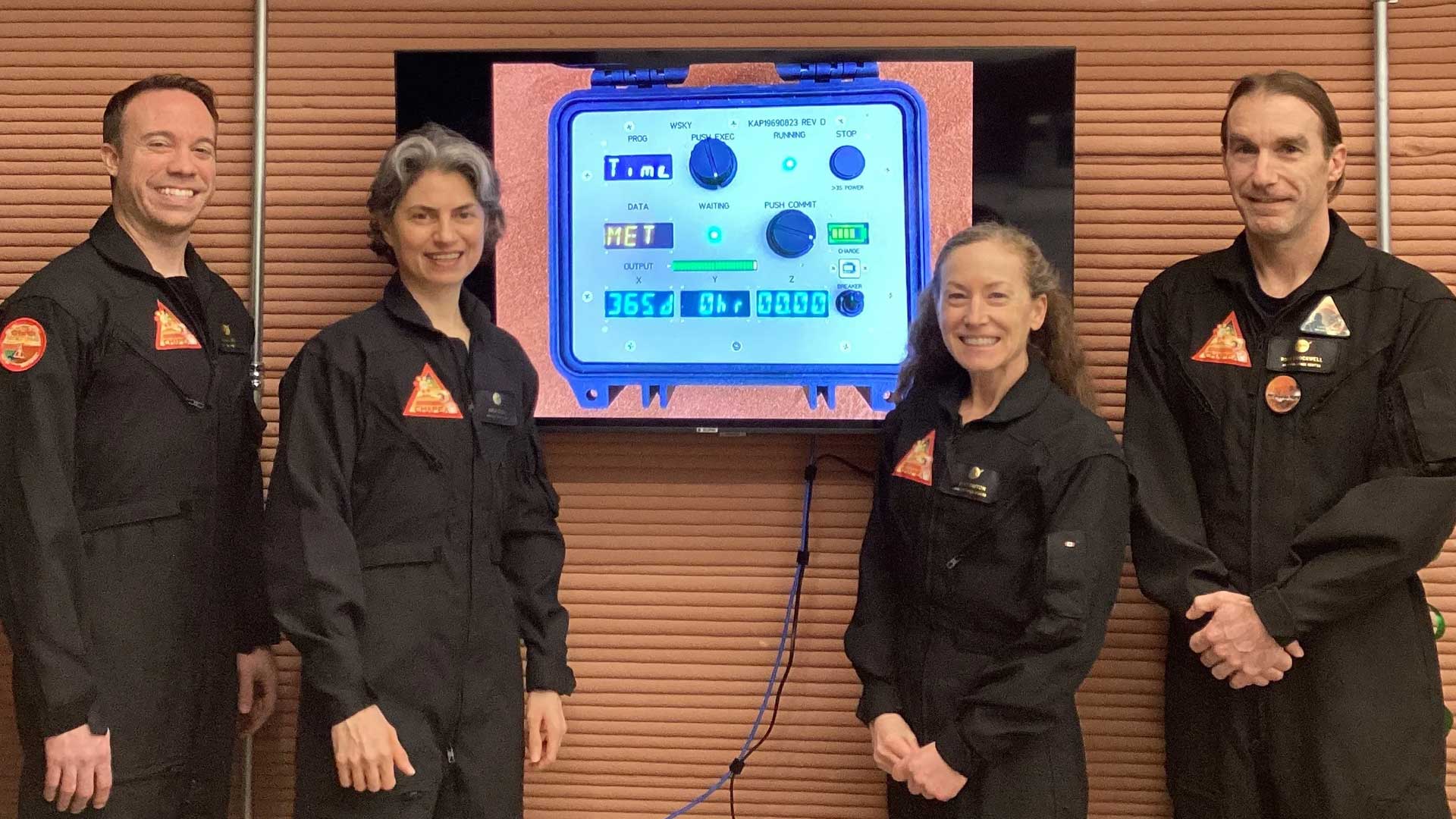 The first CHAPEA mission crew members who have been living and working inside NASA’s first simulated yearlong Mars habitat mission pose for a photograph taken on June 25, 2024.
The first CHAPEA mission crew members who have been living and working inside NASA’s first simulated yearlong Mars habitat mission pose for a photograph taken on June 25, 2024.
By Joe Hernandez | NPR
Four volunteers who spent more than a year living in a 1,700-square-foot space created by NASA to simulate the environment on Mars have emerged.
The members of the Crew Health and Performance Exploration Analog mission — or CHAPEA — walked through the door of their habitat at NASA’s Johnson Space Center in Houston on Saturday to a round of applause.
“Hello. It’s actually just so wonderful to be able to say hello to you all,” CHAPEA commander Kelly Haston said to the assembled crowd.
Haston and the other three crew members — Anca Selariu, Ross Brockwell and Nathan Jones — entered the 3D-printed Mars replica on June 25, 2023, as part of a NASA experiment to observe how humans would fare living on the Red Planet.
The volunteers grew their own vegetables, maintained equipment, participated in so-called Marswalks and faced stressors that actual space travelers to Mars could experience, including 22-minute communication delays with Earth.
The 378-day endeavor was the first of three NASA missions the space agency has planned to test how humans would respond to the conditions and challenges of living on Mars, where it says it could send astronauts as soon as the 2030s. NASA’s second CHAPEA mission is scheduled for the spring of 2025, and the third is slated to begin in 2026.
After emerging from isolation on Saturday, CHAPEA science officer Anca Selariu reflected on why she and others chose to dedicate themselves to this particular effort.
“I’ve been asked many times: Why the obsession with Mars? Why go to Mars?” Selariu said. "Because it’s possible. Because space can unite and bring out the best in us. Because it’s one defining step that Earthlings will take to light the way into the next centuries.”
NASA has conducted other isolation experiments before, including simulated journeys through space of roughly 30 days and underwater missions lasting up to three weeks at a time.

By submitting your comments, you hereby give AZPM the right to post your comments and potentially use them in any other form of media operated by this institution.